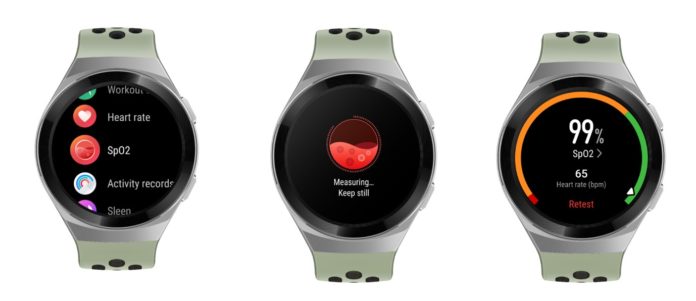|
Getting your Trinity Audio player ready...
|
Living in a fast-paced world may affect our mental and physical health in ways we do not always realise. To ensure our body is working properly, blood oxygen saturation (SpO2) is an important health indicator. Traditionally, we may have required separate health equipment to check this, but as technology has advanced, there is now a smarter way to check if we have a normal SpO2 level. First, let’s learn a little more about SpO2.
What does SpO2 mean?
Aside from blood pressure and heart rate, oxygen saturation is one of the first measurements taken in an examination. SpO2 is also known as oxygen saturation, it represents an estimate of the oxygen levels in a person’s bloodstream. The heart normally pumps approximately 5000 ml of blood per minute to the tissues in an average sized adult, delivering about 1000 ml of oxygen to the tissues per minute. The body cannot function properly if the level of oxygen in the blood is too low, this condition is called hypoxemia and can cause serious health problems.
What is a normal SpO2 level?
Under normal conditions, a healthy person should have an SpO2 level between 90 and 100. There is an extremely low chance for a person’s SpO2 level to go above the normal level without any external assistance such as supplemental oxygen. However, if the SpO2 level is below normal, that person has a risk of developing hypoxemia. This condition requires immediate treatment from the doctor.
What are the symptoms of hypoxemia?
There are two types of hypoxemia. Acute hypoxemia occurs over a relatively short period of time while the chronic hypoxemia is ongoing over a longer period. The symptoms of acute hypoxemia could be different from chronic hypoxemia, but the common symptoms are shortness of breath, rapid breathing, wheezing, cough, confusion, fast heart rate and changes in skin colour.
Chronic hypoxemia can be difficult to detect as the body is able to compensate for the decreased oxygen in the bloodstream. The symptoms include pulmonary hypertension, cor pulmonale, right sided heart failure and polycythemia.
Who needs to check SpO2 level regularly?
Not everyone can enjoy the luxury of work-life balance, there are lots of people who work tirelessly every day across different industry. Without proper rest, working under a stressful environment may cause the brain to consume oxygen that exceeds the intake amount. Another example are hikers, who when in high altitudes experience low oxygen saturation levels or desaturation of their blood. It happens because of low atmospheric pressure at high altitudes. On the other hand, ageing heart and lungs will lead to insufficient oxygen intake and inadequate oxygen supply. The human body relies on blood to transport oxygen, and if the volume of blood decreased, oxygen will also decrease.
Snoring may cause short-term or long-term respiratory obstruction, which may lead to hypoxia, resulting in poor sleep quality and even organ damage.
How to measure the SpO2 level?
The most efficient and accurate method to measure SpO2 level is by arterial blood gas (ABG) test. It measures oxygen and carbon dioxide level from the blood sample.
The second method, which is the most common method is using a pulse oximeter. This meter has a small clip to put on a finger to measure blood oxygen indirectly by light absorption through a person’s pulse.
Huawei recently launched the HUAWEI WATCH GT 2e that comes with SpO2 monitoring. The company has always focused on health and fitness features on their smartwatches, for their latest smartwatch, they have included the feature to monitor user’s SpO2 level with a dedicated SpO2 IR sensor. To run the test, all you need to do is choose this feature from the menu and the test will automatically begin.
The biggest advantage of the HUAWEI WATCH GT 2e over the traditional methods is that users can run the test anytime and anywhere without bringing an extra medical equipment with them. For example, if you are going on a hike or working in the office, it would be troublesome to bring a pulse oximeter. Also, the HUAWEI WATCH GT 2e is 50m water resistant and has a two-week battery life, so it can accompany you for a long camping trip or a swim in the pool, helping you to perform health management actively and comprehensively.
Besides, SpO2 is not the only thing you should be checking regularly. To ensure your body is functioning well, heart rate and stress level play an important part in keeping our body and minds healthy. HUAWEI WATCH GT 2e features the all-new self-developed TruSeen™ 3.5 heart rate monitoring technology that can accurately monitor the heart rates and the HUAWEI TruRalex technology provides 24/7 pressure monitoring for users, keeping an eye on users’ mental health status.
Source: Daily Mail GH




